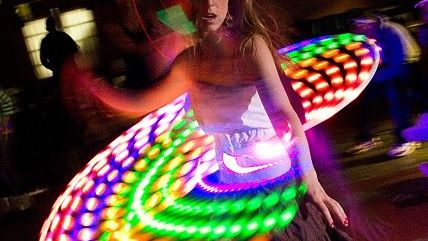Law Championed by Joe Biden Leads to More Ecstasy Deaths


The quarterly social research magazine Contexts has an article by Tammy Anderson, author of Rave Culture: The Alteration and Decline of a Philadelphia Music Scene, in its Fall issue about the 2003 Reducing Americans' Vulnerability to Ecstasy (RAVE) Act, championed by then-Sen. Joe Biden. The law was intended to reduce deaths due to the use of ecstasy, a pill that contains MDMA, usually cut with caffeine or some other drug. How deadly is ecstasy? Statistics are hard to come by. Sixty-three people were reported to have died from ecstasy used in 2000. Many more die from, say, alcohol poisoning every way—the ecstasy death rate might be as low as one per million users.
Nevertheless, the perceived exoticism and danger of the drug, exaggerated by media accounts of young people's deaths, led Joe Biden to add penalties to venues that knowingly cater to drug users, a primary component of the RAVE Act, in a misguided and typical fashion for government. And, as typical for a government solution, the RAVE Act came with "unintended consequences" that did the opposite of what legislators hoped the bill would do. Instead of reducing vulnerability to ecstasy, the law increased that vulnerability by criminalizing the simple things that make ecstasy even safer, like dance floor patrols, cool down rooms, even free water. The responsibility to stay safe is on the drug user—to know before taking a drug that it may require rehydrating before feeling dehydratring, cooling down once in a while, and so. But that certainly doesn't preclude venues from offering tools to make drug use even safer too. It's being a good Samaritan and its good business too. When given the choice, drug users prefer to go to venues that cater to their use rather than venues that will toss them into an alley when they're throwing up from a bad drug trip.
That happened to one drug user according to Anderson, because the club believed, not wrongly, that if they offered medical assistance they would be held liable for her drug use. That's what Joe Biden has wrought on drug users that don't happen to be his children because of his obsession with the war on drugs. Contexts reports:
The 2003 RAVE Act places young ravers at great risk of harm. Because the act treats raves' cultural traits as evidence that promoters are permitting drug use and sales, it places festival stakeholders in a bind over how to protect ravers without being shut down. For example, rave promoters are perceived to sanction drug use if they permit cultural props such as glow sticks, lollypops, and massage oils to be sold at their event, or if they provide chill rooms and free bottled water to ravers. Since MDMA use (in either its Ecstasy or Molly varieties) and dancing at raves can produce extreme dehydration, critics interpret the distribution of free bottled water as a sign that promoters are trying to hydrate, and therefore accommodate, ravers' drug use. Promoters even told me that "rave" language on flyers or other promotional materials could serve as evidence of a legal violation.
If they offer drug intervention services, such as drug testing and education, promoters may be at even greater legal risk. Rotondo died from MDMA toxicity; a MDMA/Methylone combination killed Russ. Had drug testing and education been offered at EZoo, Rotondo might have learned not to take so many hits of Molly and Russ would have learned that his Molly had been mixed with extremely dangerous methylone ("bath salts").
From my first drug experience I've always been sure to research and talk with friends about every drug I thought about taking. Legalizing MDMA would make drug use even safer by allowing simple education to win over the anti-drug propaganda privileged in an environment where drugs are criminal.


Show Comments (49)